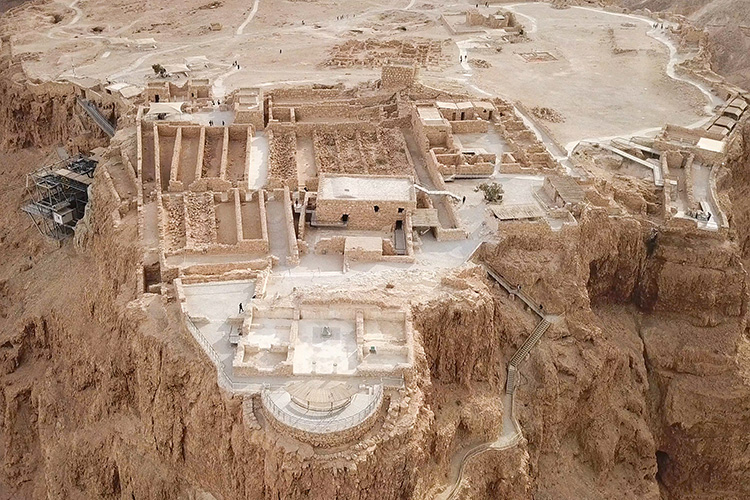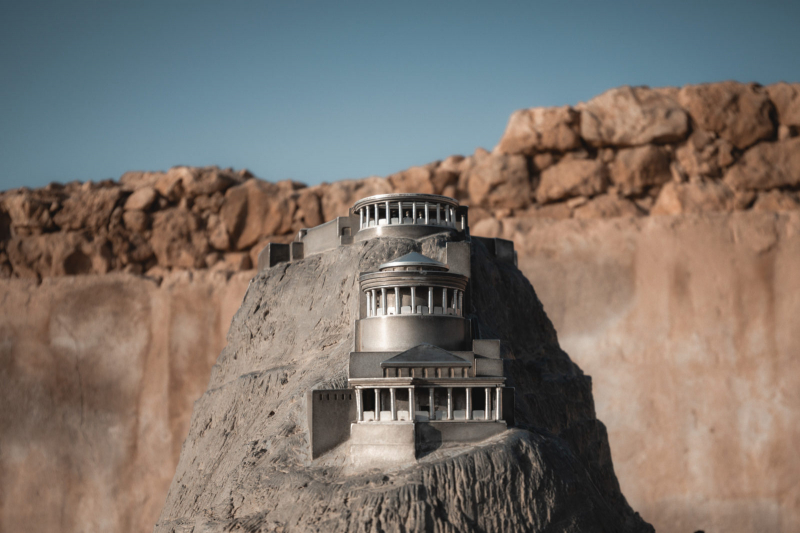Masada
The majestic fortress of Masada rises above the Dead Sea in the middle of the Judaean Desert. Today, it’s one of the most beautiful historical sites in Israel. Masada’s history is almost exclusively known through the eyes of the 1st-century Jewish Roman historian, Josephus. It’s believed the site of Masada was first identified, settled, and fortified around the 1st century BC by a Hasmonean king called Alexander Jannaeus, although archaeology is yet to confirm this.
Sometime around 37BC, Herod the Great, King of Judaea, captured Masada and refortified it, turning it into a true fortress that could be a refuge in case of unrest or a revolt. As well as being a fortress, he also ensured it was comfortable – inside the walls were two palaces, even featuring a bathhouse, which is remarkable given the desert location. The site of Masada, which was unearthed in the 19th century, clearly marks the passage of the siege. Major archaeological excavations took place during the 1960s and revealed many of the fortress’ secrets. Thanks to its remote location, the site had been incredibly well preserved and offers a fascinating insight into the palace that once stood there.
Masada is breath-taking, even today: the sheer determination to build such a site so far away from civilization, and the serious efforts made by the Romans to capture it. Climb to the top for sunrise for romantic views over the desert, and gorgeous light. Access is either via cablecar (speedy) or the long, sweaty climb up the side of the mountain itself. The Snake Path wiggles its way from top to bottom: traditionally, it was the only way up or down, and didn’t have enough space for two people to pass each other. It’s worth walking up or down it to appreciate quite how remote Masada is.












